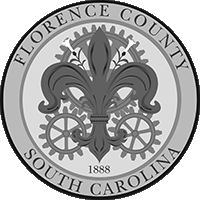The story behind the Mars Bluff bombing is one of the most fascinating events to ever happen in our nation during the 20th century. It just so happened that this event took place right in Florence’s backyard.
At 3:53 on Tuesday, March 11, 1958, a group of four B-47E planes took off from Hunter Air Force Base in Savannah Georgia in route to England. The small convoy of planes was performing a routine task that was part of a mission called Operation Snow Flurry. Operation Snow Flurry consisted of US military B-47s flying to England to perform mock bomb drops. Electronic receivers on the ground would receive signals from the B-47's, and that data would later be used to determine the accuracy of the mock bombing runs. During the Cold War, Air Force bombers, such as the ones being used on this particular Tuesday for Operation Snow Flurry were issued a MK 6 nuclear bomb. These bombs were carried onboard in case the planes needed to activate during an emergency wartime situation. While preparing for their transatlantic journey shortly after takeoff, the co-pilot of the 3rd B-47 had pulled a lever that was meant to engage a locking pin in the plane’s bomb harness, thus keeping the bomb extra secure for the flight’s duration.
The co-pilot reported that a light indicated that the locking pin of the bomb harness did not engage. The pilot sent flight navigator, Bruce Kulka back to inspect the problem and fix it. Bruce, a short man, while attempting to pull himself up on top of the bomb to inspect its locking harness accidentally grabbed the bomb’s emergency release mechanism. It was at this moment that Bruce and the MK-6 fell down on to the plane’s bomb bay doors. The combined weight of the bomb and Bruce forced the bomb-bay doors open and released the MK-6 into free fall. Bruce in desperation grabbed for something and was able to save himself from the 15,000ft drop. But there was no stopping the bomb. It had just left the plane.
A Mark 6 bomb isn’t nuclear unless its core containing the nuclear elements is installed. When Bruce Kulka and the MK-6 fell to B-47’s bomb bay doors its nuclear capsule was safe in a separate compartment on the plane called the “birdcage”. While not nuclear at the time of its unintended release, the 10 foot long 7,000 lbs. MK-6 still carried a substantial payload of explosives that functioned as its triggering mechanism.

Collected in Mars Bluff, SC
1958
Gift of the Gregg family
2098
When Bruce’s bomb met the earth it happened to do so near the home of Walter “Bill” Gregg, 6 ½ miles east of Florence SC in Mars Bluff. The impact instantaneously created a 50x70 ft. crater 25-30 ft. deep. The bomb’s detonation leveled nearby pine trees and virtually destroyed the Gregg residence, shifting the house off of its foundation. Everything in the home was left in ruin. The blast also totaled both of Walter Gregg’s vehicles. Walter and his family were home at that time (4:34 PM), but they were fortunate in that they only sustained relatively minor injuries when compared to the damage of the Greggs’ property. One eyewitness, J.A. Sanders, driving nearby on Hwy. 301 at the time of the explosion reported that the force of the shockwave was so substantial that it was able to turn his moving automobile around in the road. Meanwhile eight miles away, Florence County employees reported hearing the explosion and being able to view the cloud of dust caused by the explosion from the roof of the courthouse.
Hours after the incident, the Air Force established a two mile perimeter around the site and began clean up. Air Force brass quickly announced to the local press that there was no threat of radioactive contamination to the community. They also announced that residents should turn any found fragments of the classified bomb over to the local authorities. The Mars Bluff Incident marks one of the few times during our nation's history that an atomic bomb has detonated on US soil. Fortunately for our community, the Mars Bluff bomb wasn't armed with it's nuclear elements at the time.
Artifacts from Mars Bluff can be seen on display in the Florence County Museum's Pee Dee History Gallery during museum hours.










